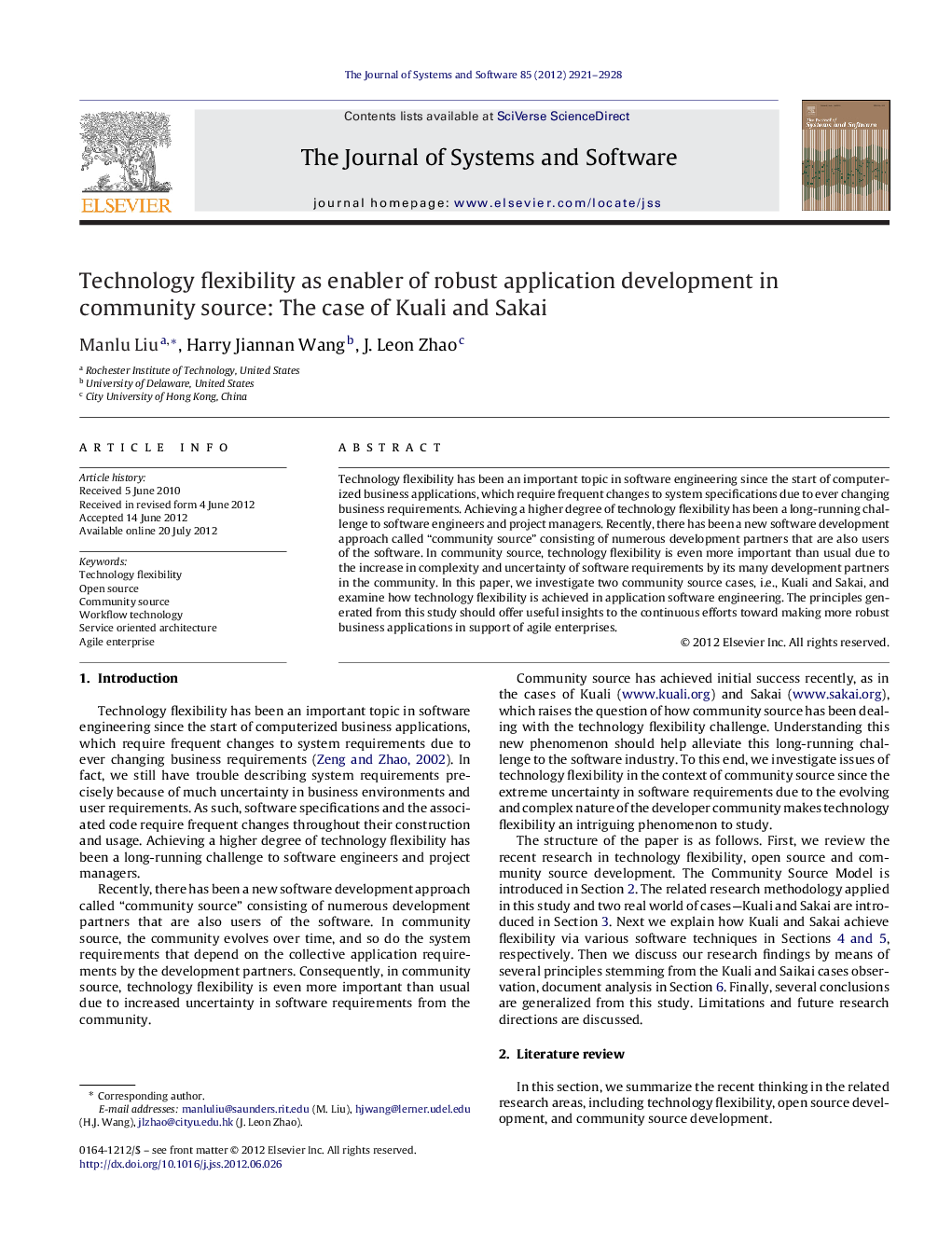| Article ID | Journal | Published Year | Pages | File Type |
|---|---|---|---|---|
| 461901 | Journal of Systems and Software | 2012 | 8 Pages |
Technology flexibility has been an important topic in software engineering since the start of computerized business applications, which require frequent changes to system specifications due to ever changing business requirements. Achieving a higher degree of technology flexibility has been a long-running challenge to software engineers and project managers. Recently, there has been a new software development approach called “community source” consisting of numerous development partners that are also users of the software. In community source, technology flexibility is even more important than usual due to the increase in complexity and uncertainty of software requirements by its many development partners in the community. In this paper, we investigate two community source cases, i.e., Kuali and Sakai, and examine how technology flexibility is achieved in application software engineering. The principles generated from this study should offer useful insights to the continuous efforts toward making more robust business applications in support of agile enterprises.
► Community source focuses on enterprise applications rather than generic system-level software, and thus community source requires more technology flexibility. ► User requirements in community source are very complex and volatile, thus requiring more technology flexibility. ► The volatile developer composition in community source requires even more technology flexibility. ► Technology flexibility in community source is needed to support more system transparency and is achieved via modularization and customization. ► Technology flexibility in community source is further enabled by means of SOA, document-centric workflow, and rule-based modeling.
